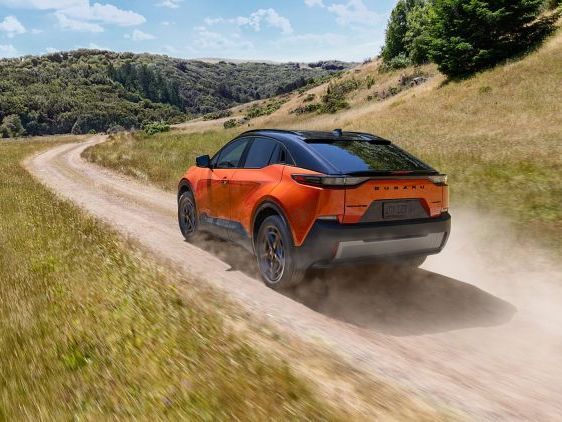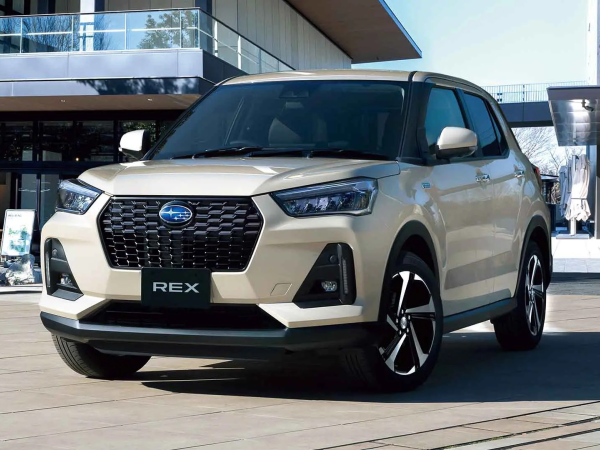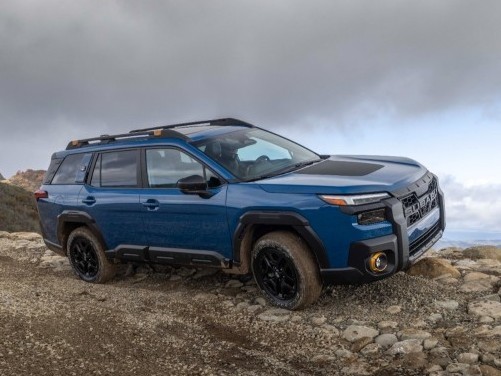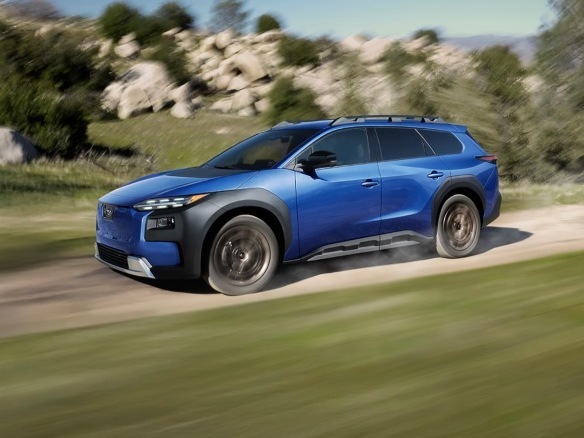Q
How much is insurance for a 2024 BRZ?
The insurance cost of the 2024 Subaru BRZ in Malaysia fluctuates based on multiple factors, typically ranging from RM3,000 to RM6,000. It depends specifically on the owner’s age, driving record, vehicle usage (private or commercial), coverage type (comprehensive or third-party insurance), and insurance provider policies. For instance, local Malaysian providers like Etiqa, Allianz, or Takaful may offer different quotes.
Since new vehicles use higher-value parts and incur higher repair costs, first-year premiums are relatively high. However, premiums can be reduced annually via the No-Claim Discount (NCD), with a maximum discount of up to 55%. Before purchasing the vehicle, it is recommended to get accurate quotes via insurance providers’ official websites or price-comparison platforms, and to understand Malaysia’s auto insurance "co-insurance clause"-which requires the policyholder to cover a portion of costs when filing a claim-as this aids budget planning.
As a sports car, the BRZ’s premiums may be slightly higher than those of regular sedans, but selecting appropriate add-on coverage (e.g., natural disaster coverage) can enhance protection.
Special Disclaimer: This content is published by users and does not represent the views or position of PCauto.
Related Q&A
Q
Does the 2017 Subaru BRZ have a manual or automatic transmission?
The 2017 Subaru BRZ hits the Malaysian market with two transmission options to suit different driving styles: a 6-speed manual for those who crave that direct, hands-on control, and a 6-speed automatic that's more at home in stop-and-go city traffic or daily commutes. Under the hood, you've got a 2.0-liter flat-four engine pumping out 200 horsepower and 205 Nm of torque—smooth power delivery with sharp throttle response. Pair that with the rear-wheel-drive setup, and you're looking at a car that handles like a dream, perfect for drivers who live for the thrill of the road.
In Malaysia, the BRZ has built up a solid following among performance car enthusiasts, thanks to its unique driving dynamics and relatively accessible price tag. And let's not forget its modification potential—it's a favorite in the local tuning scene, with plenty of folks upgrading suspension, exhausts, and intakes to squeeze out even more fun. Whether you row your own gears with the manual or opt for the automatic, the 2017 BRZ delivers loads of driving enjoyment for Malaysian owners who want that sporty, engaging feel behind the wheel.
Q
What is the safety rating of the 2017 Subaru BRZ?
The 2017 Subaru BRZ scored well in several major safety evaluations. For instance, it earned the "Top Safety Pick" designation from the Insurance Institute for Highway Safety (IIHS), with strong performances in frontal crash, side crash, and roof strength tests. However, it only received an "Acceptable" rating for head restraint and seat safety.
For Malaysian buyers, while ASEAN NCAP hasn't specifically tested the 2017 BRZ, Subaru has always emphasized safety technology. The BRZ comes standard with essential safety features like multiple airbags, Vehicle Stability Control (VSC), and Anti-lock Braking System (ABS), which enhance everyday driving safety.
It's worth noting that as a rear-wheel-drive sports car, the BRZ's low center of gravity and precise handling can indirectly help reduce accident risks. That said, drivers still need to be mindful of a rear-drive car's dynamics on wet roads—moderating speed and steering inputs is key to staying safe.
If you're considering a used BRZ, it's advisable to check the service records and accident history to ensure all safety systems are functioning properly.
Q
Does the 2017 Subaru BRZ have a noise issue?
The 2017 Subaru BRZ doesn't typically have significant noise issues in everyday driving. But some owners might notice a bit more wind or road noise at highway speeds, that's not surprising considering its sporty setup and those slick frameless doors. They look awesome, sure, but they are not very effective in sound insulation. Still, overall, the noise levels are totally in line with expectations from a sports car in this class.
For Malaysian owners, the hot climate can make tires wear out a bit quicker. My tip? Keep an eye on your tire condition regularly and maybe replace them with a set that's better at reducing road noise – that'll have a significant impact. Also, don't neglect servicing those chassis bushings and suspension bits. The tropical rain and humidity around here can speed up rubber aging, and worn parts can start to produce abnormal noises before you know it.
If you do hear something weird, start by checking the exhaust system mounts or the driveshaft universal joints. Those can get a little loose after long - term use. And hey, remember that the BRZ's engine note is actually tuned – especially when you're revving it higher, you'll hear more intake noise in the cabin. That's deliberate, to make you feel more connected to the drive, not a mechanical problem.
If you're really after more peace and quiet, adding sound - deadening material in the trunk and wheel wells is a solid move. It's a pretty common modification here in Malaysia, and it's very effective.
Q
Is the 2017 Subaru BRZ reliable?
The 2017 Subaru BRZ holds up pretty well in terms of reliability. Under the hood, you've got that 2.0-liter flat-four FA20 engine – it delivers power smoothly with decent fuel economy, making it a solid fit for daily drives around Malaysia and the occasional mountain road blast. Thanks to that boxer engine's low center of gravity, the handling is sharp and engaging. A heads-up though: with these boxer engines, keeping an eye on the oil level becomes a bit more important as they rack up miles, just to avoid any potential lubrication hiccups down the line.
When it comes to the gearbox, both the 6-speed manual and 6-speed auto variants earn praise for their durability and crisp, smooth shifts. The chassis and suspension setup feel robust too, handling Malaysia's varied road conditions nicely. Now, since the BRZ sends power to the rear wheels, you'll want to be a touch more cautious when the roads are wet or slippery to prevent any unexpected slides.
Inside, the cabin materials prioritize functionality over flash, but the build quality is solid – you won't hear a lot of annoying rattles even after years of use. Maintenance costs land somewhere in the middle of the sports car spectrum, and sticking to regular servicing is a smart move to keep it running strong for the long haul. If you're after driving fun and don't mind a slightly firmer ride from the suspension, the 2017 BRZ is definitely one to consider.
Q
Is BRZ 2017 good for long drives?
The 2017 Subaru BRZ, as a rear-wheel-drive sports car, delivers a well-balanced performance for long drives in Malaysia. Its low center of gravity and boxer engine provide stable handling, making it a solid fit for smooth highways like the North-South Expressway. However, the firm suspension setup might take a toll on comfort when tackling some of Malaysia's older, rougher road surfaces. The 2.0L naturally aspirated engine offers linear power delivery, ideal for cruising, though its 6.9L/100km fuel consumption means you'll want to keep an eye on Malaysia's fluctuating petrol prices. The cabin, while cozy, can feel a bit tight for taller drivers on extended trips. A quick tip for our local climate: considering the factory cooling system upgrade kit is smart given Malaysia's heat. Also, with that rear-wheel-drive layout, extra caution is definitely advised during the rainy season. What's cool though is the BRZ's strong aftermarket support here – the local car community often shares suspension upgrade ideas specifically aimed at boosting long-distance comfort. If you're regularly hitting the roads for inter-state journeys, those proven setups are worth checking out to level up your drive.
Q
What is the fuel economy of the 2017 BRZ?
The 2017 Subaru BRZ delivers moderate fuel economy. Official figures put the manual transmission model at around 8.4 liters per 100 kilometers combined (that's roughly 12 km per liter), while the automatic is slightly better at approximately 7.8 liters per 100 km combined (about 13 km per liter). Of course, your actual mileage will vary depending on how you drive, the roads you're on, and how well you keep up with maintenance.
Under the hood, you've got a 2.0 - liter naturally aspirated flat - four engine. This car is not about achieving maximum fuel efficiency; it's all about the driving fun. So, those fuel numbers are pretty much in line with other performance - focused cars in its class.
For Malaysian buyers, the BRZ's fuel economy is generally acceptable for city commutes, but you'll want to be mindful of fuel costs during longer highway stints. Sticking to regular maintenance is a good idea to keep it running at its best and control fuel expenses.
If outright fuel efficiency is your top priority, you might want to look into a hybrid or turbocharged alternative. But the BRZ's highlight is its sharp handling and that sweet rear - wheel - drive thrill – it's well - suited for drivers who live for the experience behind the wheel.
Q
How fast does a Subaru BRZ go 0-60?
The Subaru BRZ clocks in at around 6.2 seconds for the 0-60 mph (roughly 0-97 km/h) sprint. That kind of pace comes courtesy of its 2.4-liter flat-four naturally aspirated engine, which cranks out 228 horsepower and 250 Nm of torque. Pair that with either a 6-speed manual or 6-speed automatic gearbox, and you get snappy throttle response and a nice, linear power delivery. For drivers here in Malaysia, the BRZ's rear-wheel-drive setup and low center of gravity really dial up the fun factor, making it a hoot on our twisty mountain roads or even at the track. Now, it's worth mentioning that real-world acceleration can vary a bit depending on road surface, tire choice, or how you're shifting, but the BRZ still stands out in its class for offering solid bang for your buck and a super engaging drive. If you're craving more performance, you could look into legally modifying the intake, exhaust, or swapping in some lighter components—just make sure you're keeping it in line with JPJ's regulations.
Q
What is the L 100km on a 2017 BRZ?
The fuel economy of the 2017 Subaru BRZ (measured in liters per 100 kilometers) varies depending on driving conditions and transmission type. Official figures put the manual transmission variant at approximately 8.4 L/100km combined, while the automatic version comes in at around 7.8 L/100km. This rear-wheel-drive sports car, powered by a 2.0-liter flat-four engine, strikes a nice balance between driving excitement and fuel efficiency. For Malaysian owners, it's worth noting that real-world fuel consumption can be affected by traffic congestion, driving habits, and fuel quality. We recommend using RON 95 or higher octane fuel to unlock its optimal performance. While sports cars like this do tend to drink a bit more than your average family sedan, the BRZ's key selling points lie in its precise handling and that perfect 50:50 weight distribution, which deliver an exceptional driving experience. And for daily maintenance, keeping an eye on tire pressure and engine condition will go a long way in helping maintain that fuel efficiency.
Q
How much does a 2017 BRZ weigh?
The 2017 Subaru BRZ's weight varies depending on the specific trim. The manual transmission models tip the scales at around 1,270 kg (curb weight), while the automatic versions are a bit heftier, coming in at approximately 1,290 kg. As a rear-wheel-drive sports car, that lightweight design really helps sharpen up the handling – it makes a noticeable difference when you're carving through Malaysia's twisty mountain roads or pushing it on a track, giving you that nimble, connected feel.
The BRZ shares its platform with the Toyota 86, and both cars prioritize a low center of gravity and balanced chassis – perfect for folks who live for driving thrills. Over here in Malaysia, with our hot climate, a lot of owners end up adding extra bits like body kits or upgraded cooling systems, which can add a tiny bit of weight. It's a good idea to keep an eye on your tires and suspension with regular checks to make sure everything's performing at its best.
Fuel economy on the BRZ isn't too shabby either, making it a solid pick for daily driving and weekend mountain runs. All in all, it's a pretty bang-for-your-buck entry-level sports car.
Q
What is the top speed of the 2017 Subaru BRZ?
The 2017 Subaru BRZ tops out at 210 km/h (around 130 mph). This rear-wheel-drive sportscar packs a 2.0-liter naturally aspirated flat-four engine, cranking out 200 horsepower and 205 Nm of torque. Paired with either a 6-speed manual or 6-speed automatic gearbox, its power delivery prioritizes linearity and driver engagement over outright top speed bragging rights.
Here in Malaysia, the BRZ's chassis setup and low center of gravity make it a riot on twisty mountain roads or track days. That flat-four engine's inherent balance also does wonders for cornering stability. It's worth noting, though, that real-world top speed can vary depending on local weather, road surfaces, or electronic limiter settings – always best to explore a car's limits on a closed circuit or track.
For those craving a bit more pep, some owners tweak the intake/exhaust or remap the ECU for small power gains. Just make sure any mods comply with JPJ regulations to avoid issues come inspection time or voiding your warranty.
Latest Q&A
Q
Does the 2020 Honda Accord have transmission problems?
The 2020 Honda Accord has performed well overall in the Malaysian market. Its CVT and 10-speed automatic transmissions (depending on the trim) are technically mature, with most owners reporting smooth and reliable operation. However, some isolated cases may experience slight low-speed hesitation or delayed shifting, which are common characteristics of CVT transmissions rather than malfunctions. Honda Malaysia has not issued any large scale recalls or technical bulletins for this model regarding the transmission. It is recommended to check the transmission fluid condition during regular maintenance to ensure optimal performance. For consumers considering a used 2020 Accord, it is advisable to conduct a pre-purchase inspection through an authorized Honda service center, focusing on reading transmission fault codes and historical data. Notably, while CVT transmissions are known for their fuel efficiency, driving style can affect their lifespan. It is recommended to avoid frequent hard acceleration to extend component longevity. If unusual shifting vibrations or warning lights appear, contact an authorized Honda service point promptly for professional diagnosis. All Honda service centers in Malaysia are equipped with dedicated diagnostic equipment to quickly identify issues.
Q
What year to avoid Accord?
In Malaysia, the Honda Accord is a popular mid-size sedan, but certain model years can have some common issues that buyers should watch out for when shopping around. Based on owner feedback and expert reviews, some 2013 and 2014 Accord models had problems with transmission jerking and electronic system glitches, especially the CVT-equipped versions, which might develop rough shifting after long-term use. Additionally, owners of 2008 to 2010 Accords have reported higher fuel consumption and suspension noises. While these don't affect driving safety, they could increase long-term maintenance costs. If you're buying a used Accord, it's better to prioritize models from 2015 onwards—they saw significant improvements in reliability and fuel efficiency. Malaysia's hot and humid climate means you should also pay extra attention to the car's air conditioning system and electrical wiring when checking it out. Regular maintenance can really help extend the vehicle's lifespan. If your budget allows, the new Accord's hybrid system performs better in terms of fuel savings and driving experience, making it a good fit for buyers who value eco-friendliness and comfort.
Q
Which is better, the 2019 or the 2020 Honda Accord?
Both the 2019 and 2020 Honda Accord are really popular mid-size sedans in the Malaysian market. They don't differ much in core specs, but the 2020 model gets some nice detail upgrades. On the outside, the 2020 Accord has subtle tweaks to the front grille and wheel designs, giving it a more modern look, plus there are new exterior color options. Inside, the 2020 version comes standard with an 8-inch infotainment screen and an upgraded Honda Sensing safety suite, including more responsive adaptive cruise control and lane-keeping assist – features that were optional on some 2019 trims. Under the hood, both models offer the 1.5T turbo engine or the 2.0L hybrid system, with similar fuel economy, but the 2020's CVT transmission feels smoother in its tuning. For Malaysian buyers, if your budget allows, the 2020's upgraded features are worth considering, especially the improved safety tech which is really handy for daily driving. It's worth noting that 2019 models might offer better value in the used car market, but make sure to check the service records carefully if you go that route. The Honda Accord is known in Malaysia for its reliability and low maintenance costs, so both model years are solid picks – it just comes down to your budget and how much you want the newer features.
Q
Which year of Accord is most reliable?
In the Malaysian market, the Honda Accord is a favorite among consumers for its reliability and durability, especially the ninth-generation models produced from 2013 to 2017, which deliver an outstanding overall performance. This generation comes with an optimized 2.4-liter naturally aspirated engine or a 3.5-liter V6, offering smooth power delivery and decent fuel efficiency. It's paired with either a CVT or 6-speed automatic transmission—both mature technologies with low failure rates. Additionally, the ninth-gen Accord features a solid body structure and a well-tuned chassis that balances comfort and handling, making it suitable for Malaysia's diverse road conditions. If your budget is tight, the eighth-generation Accord (2008–2012) is also a solid pick, though keep in mind that some high-mileage used units may have issues like worn steering gears or suspension bushings. When shopping for a used Accord, prioritize checking regular maintenance records and pay close attention to the upkeep of critical components like transmission fluid and timing chains. As for hybrid versions, the i-MMD system in the tenth-generation Accord (2018 onwards) performs reliably, but battery life will gradually decline with years of use—professional testing is recommended before purchase. Overall, the Accord ranks among the most reliable in its class, and with proper maintenance, it can stay in great shape for the long haul.
Q
How long will a 2020 Accord last?
The 2020 Honda Accord can typically clock 200,000 to 300,000 kilometers or more with regular maintenance and proper use. Its actual lifespan depends on the owner's driving habits, how often it's serviced, as well as road conditions and climate in Malaysia. Under the hood, it’s packing Honda’s reliable Earth Dreams engine paired with a CVT transmission—proven tech with solid durability. Sticking to regular oil changes, transmission fluid replacements, and maintaining key components like the brakes and suspension can seriously extend its road life. Malaysia’s hot and humid weather might take a toll on rubber parts (think belts and seals) and the battery, so it’s a good idea to check these every six months and opt for original or high-quality replacement parts. Also, the Accord holds its value pretty well in Malaysia’s used car market, and a solid service history can bump up its resale price even more. For long-term ownership, follow the official maintenance manual and head to authorized Honda service centers for upkeep—you’ll get professional technical support and genuine parts that way. If you’re planning to keep it for the long haul, consider periodic deep maintenance too, like fuel system cleaning and coolant replacement, to keep the car in top shape.
View MoreRelated News

Subaru Registers New EV Trademark, Signaling Strategic Shift
Kevin WongAug 8, 2025

Uncharted is Subaru's first front-wheel-drive car, with a range of up to 482 kilometers.
MichaelJul 18, 2025

SUBARU REX Hybrid vs Nissan e-POWER: Spot the Difference!
WilliamJun 24, 2025

All-New Subaru Outback Debuts with SUV-Inspired Styling
JohnApr 22, 2025

Subaru's Fastest Mass-Production Vehicle Debuted in New York: 375 HP!
MichaelApr 17, 2025
View More


















Pros
Cons